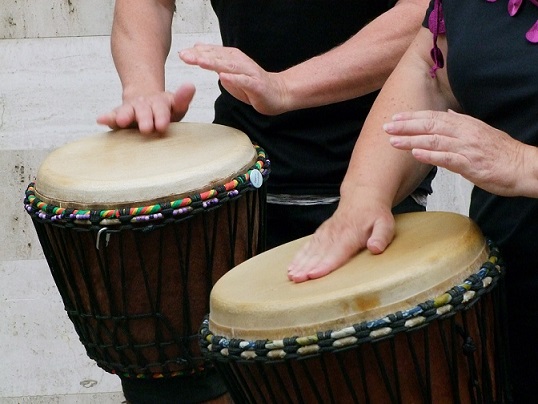
Aside from dynamics and articulation, what other musical elements can we use to make music groove? This article will answer this very question.
Pulse/Tempo
Pulse is one of the most obvious ways in which popular music and classical music vary. Popular music is commonly characterised by a steady pulse; any changes in tempo are usually sectional and rubato is not used as often as in classical music. Classical music is more susceptible to changes in tempo. Rubato, rallentando, accelerando, and other such changes in pulse are more commonly used and are imperative in creating the desired expression. Regardless of these stylistic differences, all musicians should have a solid control of pulse and tempo, whether that be playing with a metronomic pulse or lots of tempo changes.
Here are some tips to help you incorporate tempo changes into your practice.
- For improving your steady pulse, playing with a metronome is a must. Check out article 4 and article 5 in this series for tips on how to use a metronome.
- For changes in tempo, you can try the following tip.
- Choose a piece of music or a groove that you want to practice.
- Think of an emotion such as anger, laziness, happiness etc.
- Begin playing your music at a set tempo. At any given moment, either speed up or slow down to convey your emotion. You can also add dynamic variation.
- Your tempo change could be a subtle, slow rallentando or an abrupt change in tempo, whichever suits the emotion you choose.
- Repeat the process with a different emotion. See if you can play the same piece of music and convey opposite emotions (sad/happy or energetic/lazy) with your use of dynamics and tempo.
- Don’t change any of the notes you play, just your interpretations of them with regards to tempo and dynamics.
Once you’ve developed the ability to apply variances in tempo into your playing and understand how these variances can be used to convey an emotion, it’s important to know the appropriate time to do so. If you’re playing popular music with a steady pulse, you don’t want to be changing tempo apart from some possible rallentandos at the end of songs or sections, and it might not be your job to lead these tempo changes. Similarly if you’re playing a reading gig in an orchestra with a conductor, you will have to apply these tempo changes only when the music tells you to, and the changes will be conducted by the band leader.
To make music really groove, it’s important to be mindful of both dynamics and tempo. If one is missing, the music will not convey all the emotion possible or groove. So try to incorporate these ideas into everything you play and your music will really begin to groove.
This is the last part, part 7, of our article series: Making the Most of Your Practice. Check out the other articles on
⇒ Part 1: Making Practice Enjoyable
⇒ Part 2: Setting Practice Goals
⇒ Part 3: Practice Planning
⇒ Part 4: The Metronome
⇒ Part 5: The Metronome Part 2
⇒ Part 6: Make Your Music Groove with Dynamics
(Image from: http://maxpixel.freegreatpicture.com/Drum-Instrument-Djembe-Drums-Drummer-Musician-1774281)
